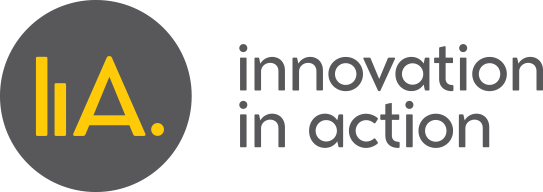Competition Criteria
Winning Innovations: Scoring Rubric for Judging
The categories and criteria are listed below. Each team will receive a score in all categories, and the winners will be those with the highest overall scores. While scoring is defined here as 1, 3, or 5, judges will also be permitted to assign scores of 2 or 4 on the overall 1-5 scale. Practice pitch round 1: Use 1, 2, 4, 5
- Understanding the Problem: Does the team have a clear and deep understanding of the problem their idea seeks to solve? Is there a clear pain-point the idea is addressing? Is the societal or market need clearly articulated?
- Understand Ecosystem: To what extent is this innovation different and better than what is currently being done or has been attempted in the past? Have they made changes based on what they heard and learned?
- 5 = Team sought an adequate diverse group of stakeholder perspectives to clarify the problem and inform their user definition and solution.
- 3 = Team sought a moderately diverse group of stakeholder perspectives
- 1 = Team needed more perspectives to inform their solution
- User Definition: Did the team demonstrate talking to users and customers to validate assumptions? How well defined is their user and customer? Does the team understand their user’s needs?
- 5 = Team understands who their first user is. They know how their proposed solution directly addresses these needs and utilize asset of their user.
- 3 = Team demonstrated a moderate connection between the solution and the need expressed by the user
- 1 = Team has a limited understanding of who their first user is.
- Solution Definition: as the team clearly defined a solution? Is the value proposition clear? Does the solution address a clear pain point and needs of the user and customer?
- 5 = Team has clearly defined a solution that addresses a clear pain point for their user and has tested adoptability of their idea.
- 3 = Team has moderately defined a solution connected to a pain point from the user.
- 1 = Team has not clearly defined a solution connected to a pain point from the user.
- Understand Ecosystem: To what extent is this innovation different and better than what is currently being done or has been attempted in the past? Have they made changes based on what they heard and learned?
- Potential for impact: Does your project demonstrate the potential to change how impact is achieved — in large or small ways? Does your project challenge people to think in new ways about the problem?
- 5 = Team has clearly defined the potential for exceptional impact.
- 3 = Team demonstrates a believable impact on a modest scale.
- 1 = Team demonstrates unclear or limited impact.
- Sustainability: Has the team developed a plan for the sustainability of the innovation? (For this competition, sustainability means the ability to sustain the operations over time.) Could the project viably be implemented and sustained in the real world?
- 5 = Team displays a solid plan to make the project’s operations sustainable.
- 3 = Team has thought about how to make the project’s operations sustainable, but still has significant gaps in its plan.
- 1 = Team does not have a viable plan for how to sustain the project’s operations.
- Demonstration of Progress: What has the team learned in the process of working on their innovation? Could they replicate this process in another setting?
- 5 = Team has excellent experience, dynamics, diverse perspectives, and a solid base of partners and advisors.
- 3 = Team has some experience, lacking some perspective, and has begun to reach out to partners.
- 1 = Team is inexperienced, has a similar perspective, and has not connected with potential partners.
- Strength of the Team: Does the team comprise the right people to do the job? Does the team include the diversity of expertise necessary to accomplish its goals? Has the team engaged a strong team of advisors andor/ partners?
- 5 = Team demonstrates significant learning around innovation, collaboration, socially engaged design and the competencies to bring them all together.
- 3 = Team demonstrates some learning but still has significant gaps that could be barriers to innovation.
- 1 = Team has not demonstrated significant learning about innovation through the competition.
- Presentation and Other Strengths: Was the presentation professional and well-practiced? Is there anything else that the team has done exceptionally well?
- 5 = Team demonstrates exceptional, participatory presentation skills that integrate all team members’ strengths and abilities. Team is professional in appearance and is strong in its overall cohesion and related skills.
- 3 = Team demonstrates moderate presentation and team cohesion/related skills, but would benefit from further guidance and practice.
- 1 = Team is not comfortable or is ineffective in presentation skills and/or team cohesion and related skills.

